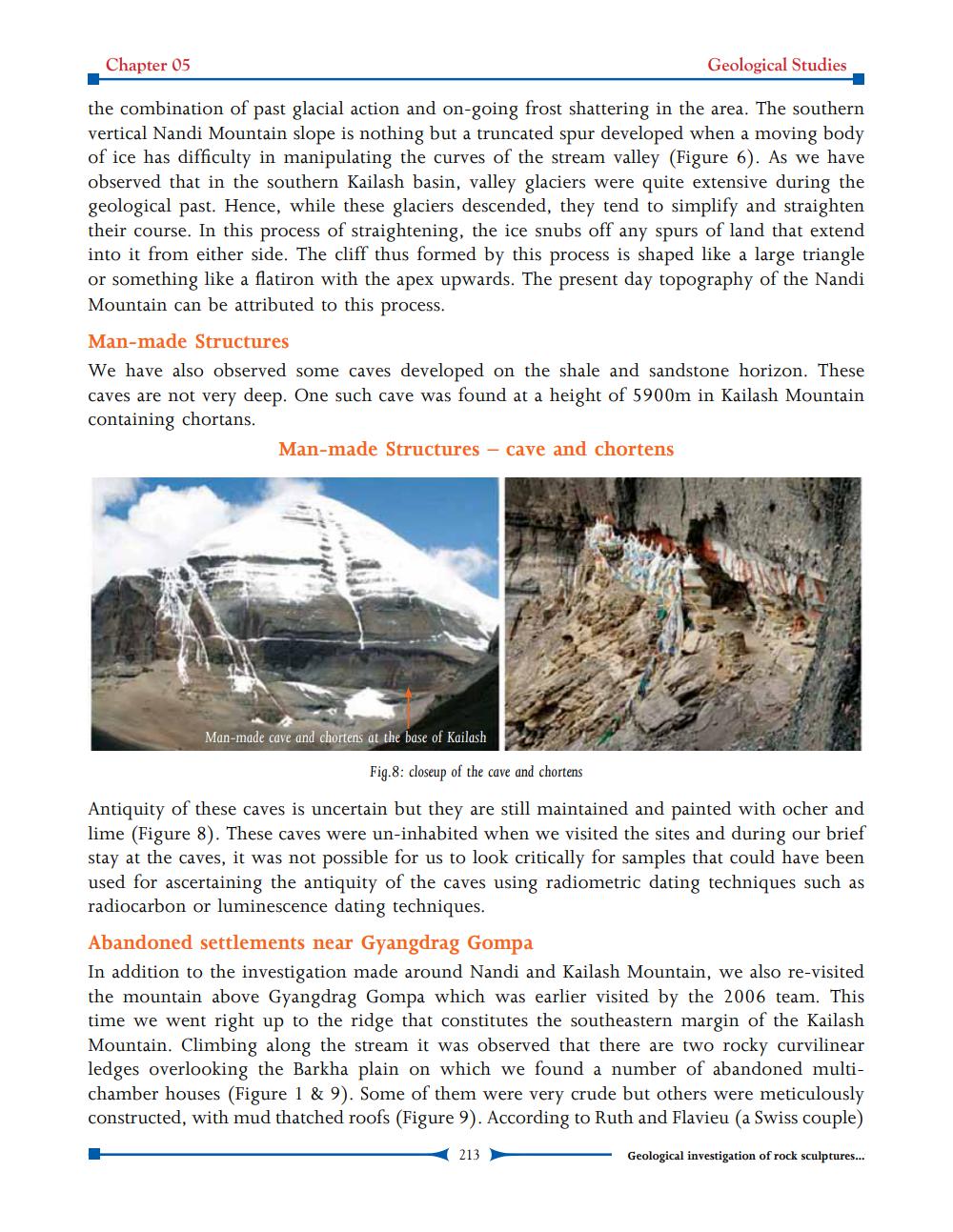________________
Chapter 05
Geological Studies
the combination of past glacial action and on-going frost shattering in the area. The southern vertical Nandi Mountain slope is nothing but a truncated spur developed when a moving body of ice has difficulty in manipulating the curves of the stream valley (Figure 6). As we have observed that in the southern Kailash basin, valley glaciers were quite extensive during the geological past. Hence, while these glaciers descended, they tend to simplify and straighten their course. In this process of straightening, the ice snubs off any spurs of land that extend into it from either side. The cliff thus formed by this process is shaped like a large triangle or something like a flatiron with the apex upwards. The present day topography of the Nandi Mountain can be attributed to this process. Man-made Structures We have also observed some caves developed on the shale and sandstone horizon. These caves are not very deep. One such cave was found at a height of 5900m in Kailash Mountain containing chortans.
Man-made Structures - cave and chortens
Man-made cave and chortens at the base of Kailash
Fig. 8: closeup of the cave and chortens
Antiquity of these caves is uncertain but they are still maintained and painted with ocher and lime (Figure 8). These caves were un-inhabited when we visited the sites and during our brief stay at the caves, it was not possible for us to look critically for samples that could have been used for ascertaining the antiquity of the caves using radiometric dating techniques such as radiocarbon or luminescence dating techniques. Abandoned settlements near Gyangdrag Gompa In addition to the investigation made around Nandi and Kailash Mountain, we also re-visited the mountain above Gyangdrag Gompa which was earlier visited by the 2006 team. This time we went right up to the ridge that constitutes the southeastern margin of the Kailash Mountain. Climbing along the stream it was observed that there are two rocky curvilinear ledges overlooking the Barkha plain on which we found a number of abandoned multichamber houses (Figure 1 & 9). Some of them were very crude but others were meticulously constructed, with mud thatched roofs (Figure 9). According to Ruth and Flavieu (a Swiss couple)
213
-
Geological investigation of rock sculptures...




